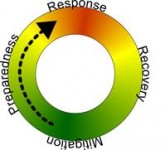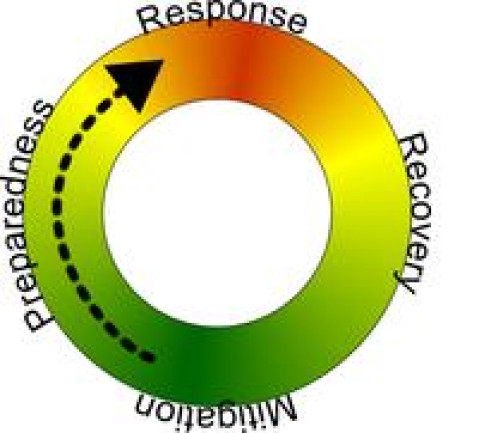Widgetized Section
Go to Admin » Appearance » Widgets » and move Gabfire Widget: Social into that MastheadOverlay zone
The Makings of Disaster, Part III: Education
By Stacey Mann
One of the discussions we often have in our classes is that for some time, public administration did not seem to have an academic home. Once housed in business and political science departments, for instance, now some public administration programs are in homes of their own. Emergency management shares a similar history and often shared the building with public safety, environmental science or public administration. Now, emergency management seems to be following a similar path and every year more emergency management departments are appearing.

In June 2010, I attended the Federal Emergency Management Agency (FEMA) Higher Education conference in Emmitsburg, Maryland. Dr. Wayne Blanchard, the former program director of FEMA’s Emergency Management Institute, stated that when he first met with several emergency management scholars in the mid-1990s to begin discussing emergency management as a discipline, very few emergency management degree programs were in existence. In 2010, he said there were over 100, and in 2014, that number is increasing.
In June 2013, I conducted a nationwide survey of emergency managers in mid-size cities to investigate a variety of local government emergency planning topics, from social media to recovery to employee management. The response was over-whelming. I received a multitude of emails from emergency managers who felt compelled to express their appreciation for inclusion, to give additional examples or even to establish an open line of communication. I concluded that if practitioners in all fields were as welcoming and forthcoming, then students around the globe would be the better for it. Without those who handle mitigating, planning, responding and recovering, we could not learn. We are able to take their mistakes, and their triumphs, and use those as examples to our students. Of course, when emergency management practitioners triumph, we do not hear about it. However, when they fail, it seems the whole world knows. Each email confirmed the idea that students should hear these experiences firsthand.
In any class, complacency could abound. It is much easier to use material from the previous semesters without updates. As dynamic as emergency management is, complacency is unacceptable. For some time I have wanted to create a video library that covered a wide range of topics in emergency management. Some good resources are available online, but the topics covered in class often are not captured in multi-media formats. As I thought about former students, friends of my department, survey respondents and other individuals who have experienced disasters, I quickly realized that these individuals have a story to tell. I set out to have those stories told, captured on video and posted in my courses.
In Fall 2013, my department hired Dr. Gretchen Richards and one of the first projects she mentioned to my department head was that she wanted to start building a video library. Essentially, she described the same project and when I found out, the two of us got together and set out on our mission. While I was ready to go out with my HD camera, Dr. Richards wanted to go many steps beyond. She contacted JSU Television Services, met with them and then we toured the studio. The crewmembers at Television Services were excited to hear about our project. A few weeks ago, we filmed our first, professionally shot panel in a studio. In just two and a half hours, five videos were produced. The list of those interested in participating continues to grow each day.
As we began working on this project, we realized that we were accomplishing much more than producing interesting videos. First, our students are able to learn firsthand from people who are in the field before, during and after disasters. The practitioner is able to explain the successes and failures. Secondly, we are offering practitioners an outlet to share that knowledge. When I was working on the survey last summer, many emergency managers just did not realize the wealth of knowledge they could bring to the classroom and when I told them just that, many were simply shocked at the idea that they had made a contribution to the educational process in a mere 15 minutes. Finally, and most importantly, we are establishing a growing network of individuals that are willing to help with our research and work with our students as interns or as research subjects. In the first video shoot, representatives of United Way discussed their experiences after the April 2011 tornadoes. Each had a perspective that could be captured as a case study – an excellent first research project for any graduate student.
However, the video project also is one that students are contributing to. The undergraduate students in a public administration and emergency management course are interviewing public administrators of all kinds about their experiences with disasters and their expected responsibilities. With the advancement of technology, everyone is a filmmaker and this particular assignment offers a creative project that gets students “in the door” of their area of interest. So far, the videos submitted by students are outstanding and students have commented that it is one of their favorite projects in their undergraduate career.
As emergency management continues to grow as an academic discipline, its impact on other disciplines also is being discovered. As academics and practitioners, our goal is one in the same — to find new avenues for improvement. Complacency in public administration and in emergency management is not an option so neither should it be in the classroom. Most importantly, if we teach our students that creativity can have positive results in the classroom, then they also may see it’s effectiveness in the field.







Follow Us!